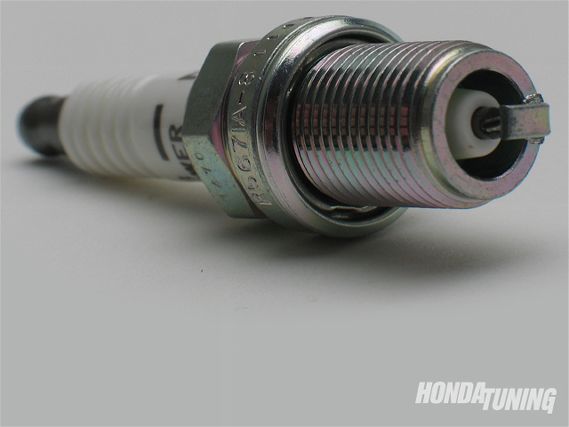 | Car Maintenance Tips - Getting Robbed - Wrenchin'
| Car Maintenance Tips - Getting Robbed - Wrenchin'
Spark Plugs
Spark plugs do more than just ignite the air/fuel mixture in your motor. While ignition is their primary function, they also serve as a heat sink, and can serve as a gauge for engine diagnostics. A bad, or "fouled", plug is one that is not performing up to duty and is responsible for your ride's loss of power.
Anything preventing sufficient current from crossing the gap between the electrode and the tip can be attributed to a fouled spark plug. For example, excessive carbon buildup will inhibit current from making the jump. Spark plugs can also wear out. Over time, even a perfect plug in a perfect engine wears down and eventually needs replacing.
A few things to be aware of regarding spark plugs: If you're running a high-compression all-motor setup, or even a turbo, you'll probably find a colder plug necessary. The colder the plug, the higher the part number (i.e BKR6E11 is hotter than BKR7E11).
If you're running a very large dome piston in an all-motor car, you need to consider electrode length. There are plugs available suited for max dome applications, featuring a recessed electrode and making as much room available for the piston in the cylinder as possible.
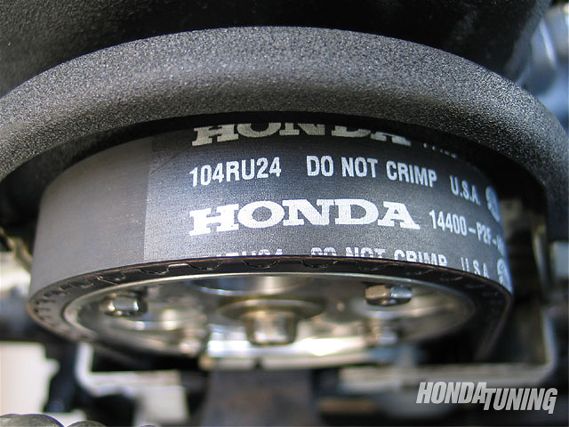 | Car Maintenance Tips - Getting Robbed - Wrenchin'
| Car Maintenance Tips - Getting Robbed - Wrenchin'
Timing Belt
Honda recommends changing your timing belt at around 80,000 miles and no, they aren't just trying to fleece you. This is major maintenance that should be addressed. Timing belts can stretch or slack over time, which will change your valve timing-and not the good kind of change in valve timing either.
It's usually not enough timing difference to cause any piston/valve-type damage, but it will rob you of a few horsepower. The real reason to make sure your belt is always in good condition is because a worn belt has a tendency to snap without warning. If your belt breaks, no one will be happy, not you and not your pistons, valves, sleeves or combustion chambers.
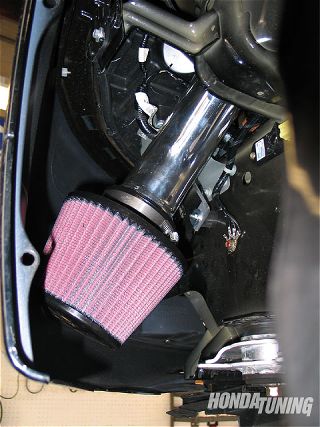 | Car Maintenance Tips - Getting Robbed - Wrenchin'
| Car Maintenance Tips - Getting Robbed - Wrenchin'
Filters
Clogged air filters rob performance simply by hindering the engine's air supply. Just replace it every 10K to ensure your engine is getting as much airflow as it needs.
An old, clogged fuel filter can create a lean condition by blocking off fuel flow to the injectors. Gradually, the condition will increase until the car is bogging and sputtering constantly. Replace your fuel filter to make your air/fuel ratios happy. Finally, don't be lazy or cheap when you change your oil. Change the filter, too.
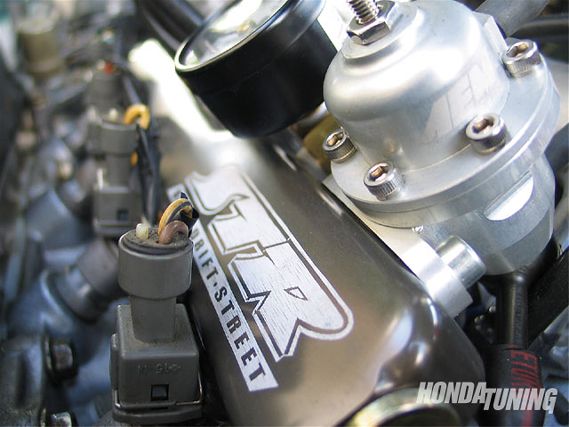 | Car Maintenance Tips - Getting Robbed - Wrenchin'
| Car Maintenance Tips - Getting Robbed - Wrenchin'
Injectors/Gas
If you regularly replace your fuel filter and use a reliable brand of gas, this section may not apply to you. A clogged injector hinders power production by creating a lean condition or causing an irregular spray pattern and improper fuel atomization. Clogging can happen on either side of the injector.
The top (inlet) of an injector has a replaceable screen intended to catch any bad guys on their way in. If the top is dirty or clogged, clean the screen. If it doesn't want to get clean, replace it.
Tips can be dirty or clogged for a couple of reasons. Black, gooey positive crankcase ventilation sludge being drawn into your intake charge can play a part in dirtying an injector tip. Bad gas is also a major contributor to injector flow problems. Avoid Sam's Gas and Beer off of Highway 123 and head for the nearest Shell, Chevron, 76 or other major gas station.
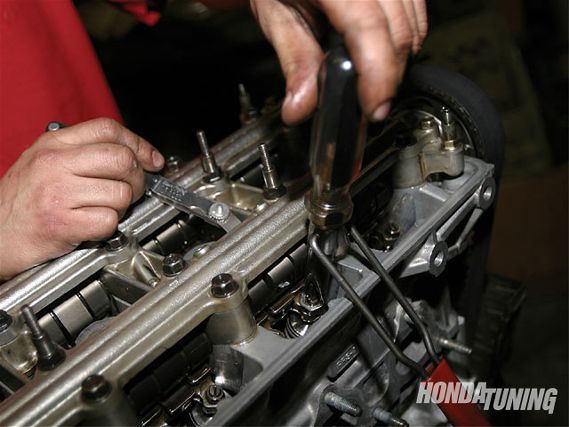 | Car Maintenance Tips - Getting Robbed - Wrenchin'
| Car Maintenance Tips - Getting Robbed - Wrenchin'
Valve Lash
Changing valve lash clearances alters the cam's effective profile. Opening or closing the valve lash clearances can have a dramatic effect on power. A cam with a 0.450-inch lift and a valve lash of .010 inch opens the valve 0.440 inch. The other 10/1000 are lost making up for the valve lash clearance.
If your valve lash is somehow way off-let's say .020 inch-the same cam will end up with a working profile of only .430 inch, which defeats the purpose of getting that big dog cam in the first place. Duration decreases a bit as the clearances loosen. The more clearance, the later the valve will open. Between 7-9mm seems to be the standard for valve lash in most Honda motors.
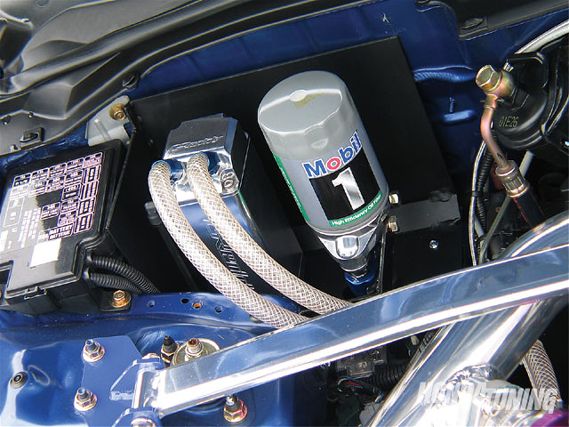 | Car Maintenance Tips - Getting Robbed - Wrenchin'
| Car Maintenance Tips - Getting Robbed - Wrenchin'
Positive Crankcase Ventilation (PCV)
Crankcase evacuation is an important aspect of an engine build. Positive pressure in the crankcase can cause ring seal problems, resulting in loss of compression, or blowby. Blowby can cause detonation, and a loss in compression is definitely a loss in power.
Also, if there is positive crankcase pressure, the pistons can be essentially pumping the air on their way back down the cylinder, resulting in a parasitic power loss. Pull out your PCV valve-the little plastic thing in the black box on the back of your block-shake and listen to it. If it rattles, it's still good. If not, it's time for a new one.
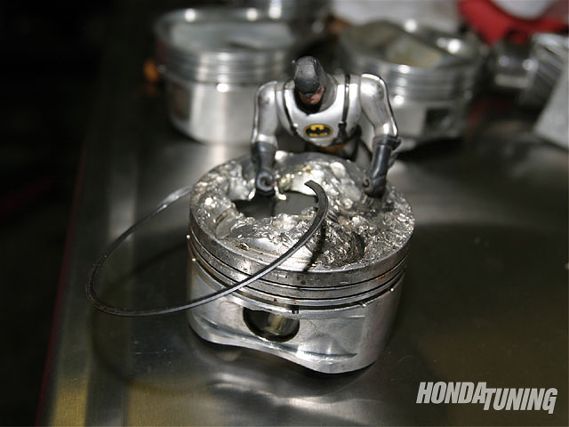 | Car Maintenance Tips - Getting Robbed - Wrenchin'
| Car Maintenance Tips - Getting Robbed - Wrenchin'
Compression Test
While a compression test isn't really routine maintenance, it's a good indicator of how the rest of the maintenance you are doing is paying off. Low compression is probably the most major loss of power you can have. It can result from a couple of things. Low compression could be indicative of a valvetrain problem, such as improper valve lash, loose valve guides/seats, or broken valve springs.
The other main compression killer is broken rings, or marred and/or cracked sleeves. If you run a compression test and it's low, do a leakdown test. Hopefully you'll find any problems in the head, which is the easier fix. If you find the problem in the block, prepare for a complete rebuild or replacement of the bottom end.
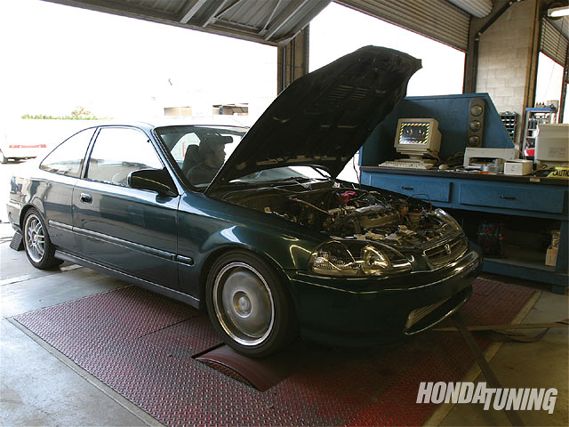 | Car Maintenance Tips - Getting Robbed - Wrenchin'
| Car Maintenance Tips - Getting Robbed - Wrenchin'
Dyno Tuning
"Tuning" is not by any means routine maintenance for the average car owner, but for enthusiasts, it should be. Every mod you make to your engine, whether it's changing the intake manifold or turning up the boost by 5 more psi, affects the motor's tune. Dyno tuning is the best way to make power without adding parts. With the recent popularity of grassroots engine management systems, tuning is becoming more and more affordable for the enthusiast community.
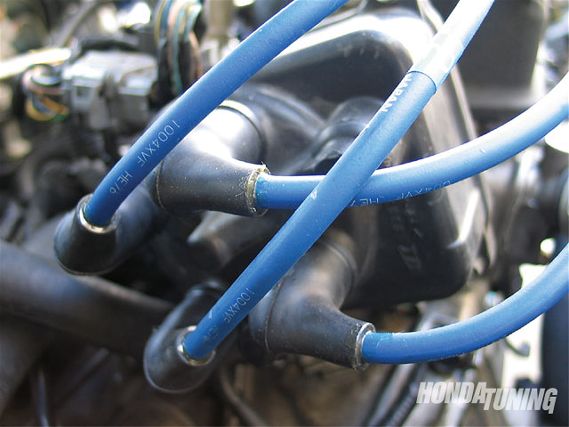 | Car Maintenance Tips - Getting Robbed - Wrenchin'
| Car Maintenance Tips - Getting Robbed - Wrenchin'
Distributor
Your distributor is a system of parts that all require maintenance to work together in harmony. If you have a burnt rotor that is red or brown, it's probably not making the right connection, even if the cap is brand-new.
It also works the other way around. If your cap is worn and old, your rotor can be fantastic and your distributor still might not work to the best of its capabilities.
Your plug wires should also be fairly new at all times. Any sign of wear, like torn insulators or boots, should be addressed immediately. Worn-out plug wires, rotors and caps all contribute to a car's significant collective power loss.
Your distributor is also good for adjusting static timing. Check your timing with a timing light. The factory-recommended setting is 16 degrees before top dead center (BTDC). You could be losing power if your static timing is set to, say, 10 degress BTDC.
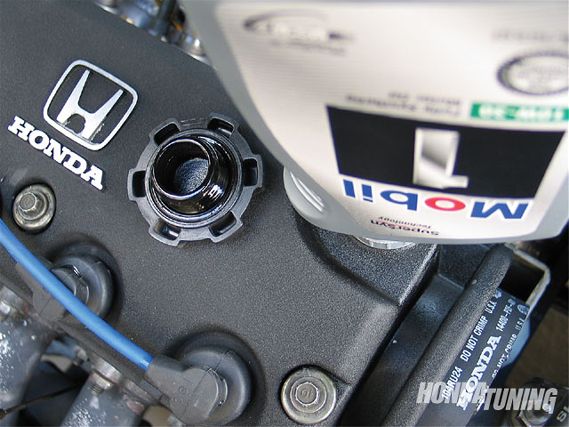 | Car Maintenance Tips - Getting Robbed - Wrenchin'
| Car Maintenance Tips - Getting Robbed - Wrenchin'
Oil
Your high school auto shop teacher wasn't just spitting the petroleum company line when he told you to change your oil every 3,000 miles. Friction, anywhere in your engine, causes parasitic loss. You can reduce friction by keeping the lubricants in your motor clean and fresh at all times.
That said, if you're running a high-viscosity nonsynthetic oil, try a race-engineered oil such as Redline, Torco, Motul or Royal Purple. Race oils have added friction modifiers to further reduce parasitic losses caused by friction and drag between parts of your rotating assembly. Just one oil change can usually result in a noticeable power increase and throttle response.
